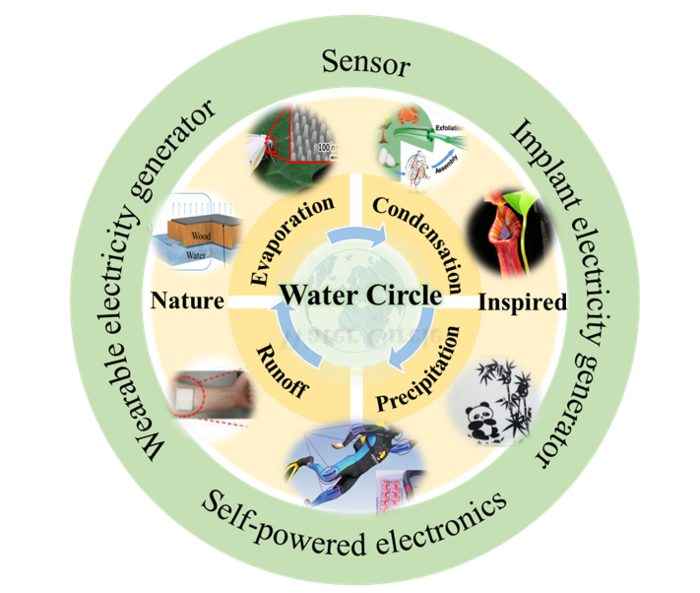Two-dimensional materials, such as transition metal dichalcogenides, have applications in public health due to their large surface area and high surface sensitivity. These materials also have outstanding electrical, optical, and electrochemical properties.
 Researchers present the property modulations of two-dimensional transition metal chalcogenides including their fundamental property, modulation methods, and functionalization. In addition, their applications as highly sensitive biosensors are thoroughly discussed. Image Credit: Nano Research Energy, Tsinghua University Press.
Researchers present the property modulations of two-dimensional transition metal chalcogenides including their fundamental property, modulation methods, and functionalization. In addition, their applications as highly sensitive biosensors are thoroughly discussed. Image Credit: Nano Research Energy, Tsinghua University Press.
A research team reviewed strategies for modulating the characteristics of two-dimensional transition metal dichalcogenides (TMDs). These techniques have significant biomedical uses, such as biosensing.
On November 23rd, 2022, the study was published in the journal Nano Research Energy.
The team’s objective is to provide a detailed overview of this potential sector, as well as to highlight the obstacles and opportunities accessible in this study area.
In this review, we focus on the state-of-the-art methods to modulate properties of two-dimensional TMD and their applications in biosensing. In particular, we thoroughly discuss the structure, intrinsic properties, property modulation methods, and biosensing applications of TMD.
Yu Lei, Assistant Professor, Institute of Materials Research, Shenzhen International Graduate School, Tsinghua University
Since the discovery of graphene in 2004, two-dimensional materials like TMDs have received attention. Two-dimensional TMDs can act as atomically thin platforms for photoelectric conversion, energy storage and conversion, catalysis, and biosensing owing to its unique characteristics.
TMDs also have an interesting optical property and a wide band structure. Another advantage of two-dimensional TMDs is that it can be mass-produced at an affordable cost.
In public health, reliable and economical in vitro and in vivo biomolecule detection is critical for disease prevention and diagnosis.
Stress can cause unusual amounts of biomarkers like dopamine, serotonin, cortisol, and epinephrine. As a result, scientists must devise non-invasive methods of monitoring these biomarkers in bodily fluids such as sweat, tears, and saliva.
Biosensors are important in the diagnostics, environmental monitoring, and forensic industries because they allow healthcare practitioners to swiftly and precisely analyze a person’s stress and detect psychological disease.
The researchers examined the application of two-dimensional TMD as a functional material for biosensing, techniques to modulate TMD characteristics, and various types of TMD-based biosensors, such as electric, optical, and electrochemical sensors.
Public health study is always a major task in preventing, diagnosing, and fighting off the diseases. Developing ultrasensitive and selective biosensors is critical for diseases prevention and diagnosing.
Bilu Liu, Associate Professor and Principal Investigator, Shenzhen Geim Graphene Center, Shenzhen International Graduate School, Tsinghua University
TMDs in two dimensions is a highly sensitive biosensing platform. These two-dimensional TMD-based electrical/optical/electrochemical sensors have been widely used for biosensors ranging from small ions and molecules like Ca2+, H+, H2O2, NO2, NH3, to biomolecules related to central nervous diseases like dopamine and cortisol, and to molecule complexities like bacteria, virus, and protein.
The study team discovered that, despite their extraordinary promise, TMD-based biosensors face numerous hurdles that must be overcome before they can have a significant impact. They propose numerous research directions. The team suggests using a feedback loop aided by machine learning to shorten the testing time required to construct the database required for selecting the appropriate proteins and TMD pairs.
To achieve the on-demand property modulation and biomolecules/TMD database, their second suggestion is to use a feedback loop supported by machine learning. Understanding that TMD-based composites function well when turned into devices, their third proposal is that surface changes, such as defects and vacancies, be used to boost TMD-based composite activity.
Their final recommendation is to create low-cost manufacturing methods for TMD at low temperatures. The present chemical vapor deposition approach for producing TMDs can result in cracks and wrinkles. A low-cost, low-temperature approach would increase the film’s quality.
As the key technical issues are solved, the devices based on two-dimensional TMD will be the overarching candidates for the new healthcare technologies.
Yu Lei, Assistant Professor, Institute of Materials Research, Shenzhen International Graduate School, Tsinghua University
The Tsinghua University team includes Yichao Bai and Linxuan Sun, and Yu Lei from the Institute of Materials Research, Tsinghua Shenzhen International Graduate School, and the Guangdong Provincial Key Laboratory of Thermal Management Engineering and Materials, Tsinghua Shenzhen International Graduate School.
The group includes Qiangmin Yu and Bilu Liu from the Institute of Materials Research, Tsinghua Shenzhen International Graduate School, and the Shenzhen Geim Graphene Center, Tsinghua-Berkeley Shenzhen Institute & Institute of Materials Research, Tsinghua Shenzhen International Graduate School.
The study is financially supported by the National Natural Science Foundation of China, the National Science Fund for Distinguished Young Scholars, the Guangdong Innovative and Entrepreneurial Research Team Program, the Shenzhen Basic Research Project, the Scientific Research Start-up Funds at Tsinghua Shenzhen International Graduate School, and Shenzhen Basic Research Project.
Journal Reference:
Wang, K., et al. (2022) Bio-inspired water-driven electricity generators: From fundamental mechanisms to practical applications. Nano Research Energy. doi.org/10.26599/NRE.2023.9120042.